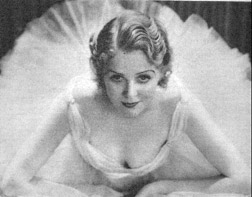 Art
Deco cinemas in Ireland
Art
Deco cinemas in Ireland
Theatre Royal, Hawkins Street, Dublin opened 1935.
Leslie Norton, architect ~ Destroyed, replaced by an office building 1962.
Art Deco Ireland
|
Theatre Royal, Hawkins Street, Dublin opened 1935. Leslie Norton, architect ~ Destroyed, replaced by an office building 1962. Art Deco Ireland |
| The
Theatre Royal was the undoubted star theatre in Dublin.
P.W.A. style moderne on the exterior, in plain travertine marble, with four black vertical bands topped by lights over the entrance, the intermediate panels were decorated by sculptural panels carved by Laurence Campbell, depicting the figures of Eire (Ireland), a celtic chieftain, and a celtic lady. Four theatrical carved masks were higher up on the facade.
The theatre interior, in complete contrast, had little of the deco style about it, being fitted out in a pseudo-moorish style. The Royal, which had extensive stage facilities 40 feet deep, ran mostly combined cinema and variety shows but it was also a venue for major touring acts. Inevitably the Theatre also adopted a full time dancing troop, which was called the Royalettes, - modelled on the Rockettes at Radio City Music Hall in New York, though they were never so numerous in the Royal as in Radio City. Photographs of the Royal do not fully do justice to the towering bulk of the building, - in a narrow street it was hard to get back far enough to take in the whole complex, using a normal camera or lenses. Bob Hope described it as "some garage" in one of his appearances there. Doomed by the fact that the site value for use as new offices in the 1960's exceeded anything likely to be gained by continued operation, the Theatre Royal and the even more art deco neighbour, the Regal Rooms survived until the arrival of television in Ireland.At present, a small exhibition commemorating the Theatre Royal is at the Dublin City Archives in Pearse Street. |
A very big cinema for Dublin with a
capacity of 3,800, it was easily the largest cinema on the island and was
even big by comparison to cinemas and theatres in the U.S.A.. It was
larger than the famed Paramount in Oakland and held the same number as the
Chicago Theatre (Chicago Il, by Rapp & Rapp).
The economics of operating it must always have been difficult. The Royal survived, including coping with the problems caused by the absence of foreign touring shows during the war, requiring a near complete reliance on local talent during World War II. Irish popular comedians, Jimmy O'Dea and later on Jack Cruise, often topped the bill. The cinema organist, George Rothwell and later Tommy Dando, was a regular performer on the Compton Organ.
|
| On to more cinemas in Dublin | Cinemas on Art Deco Ireland index | Back to Art Deco Ireland index page |